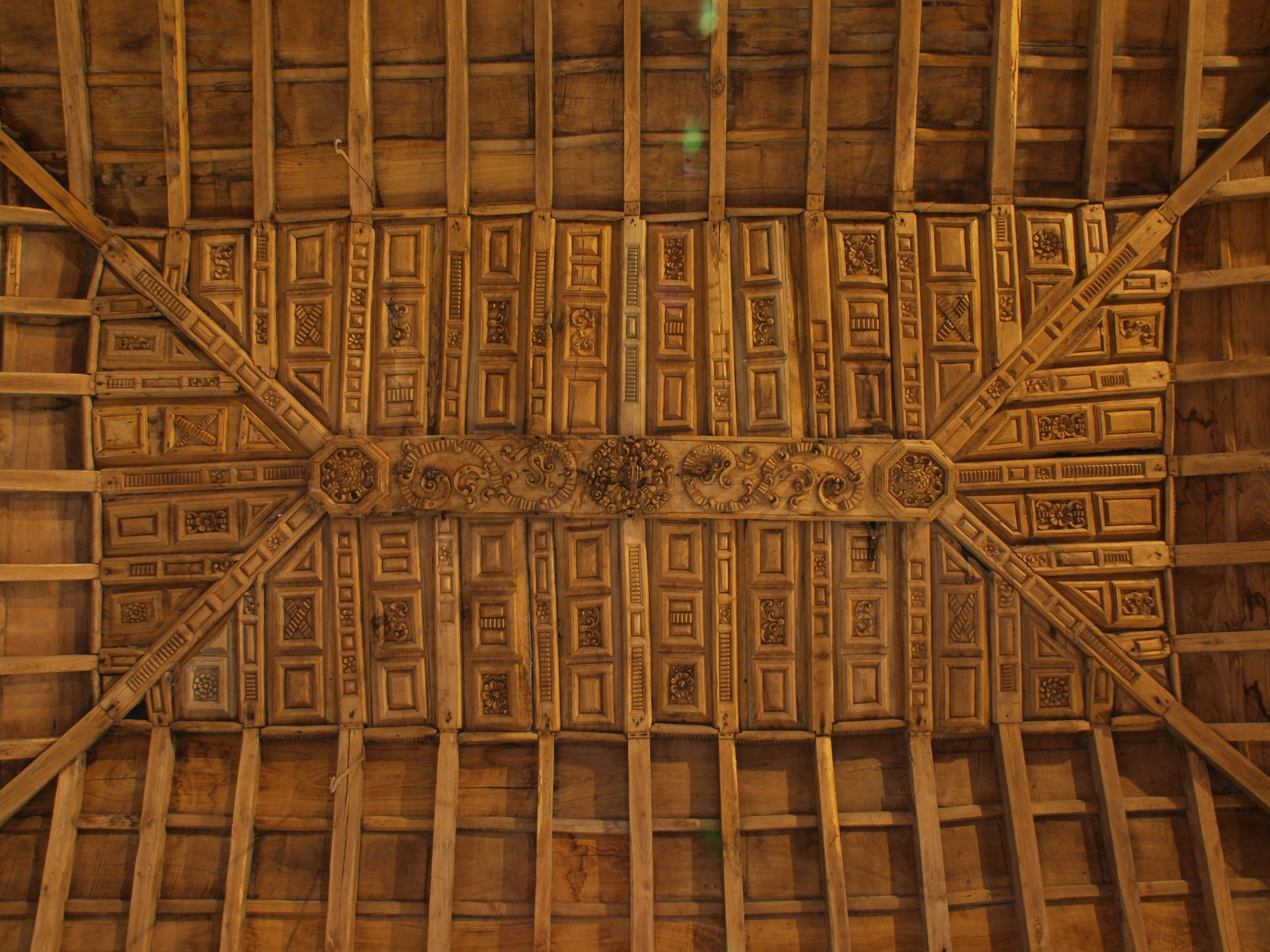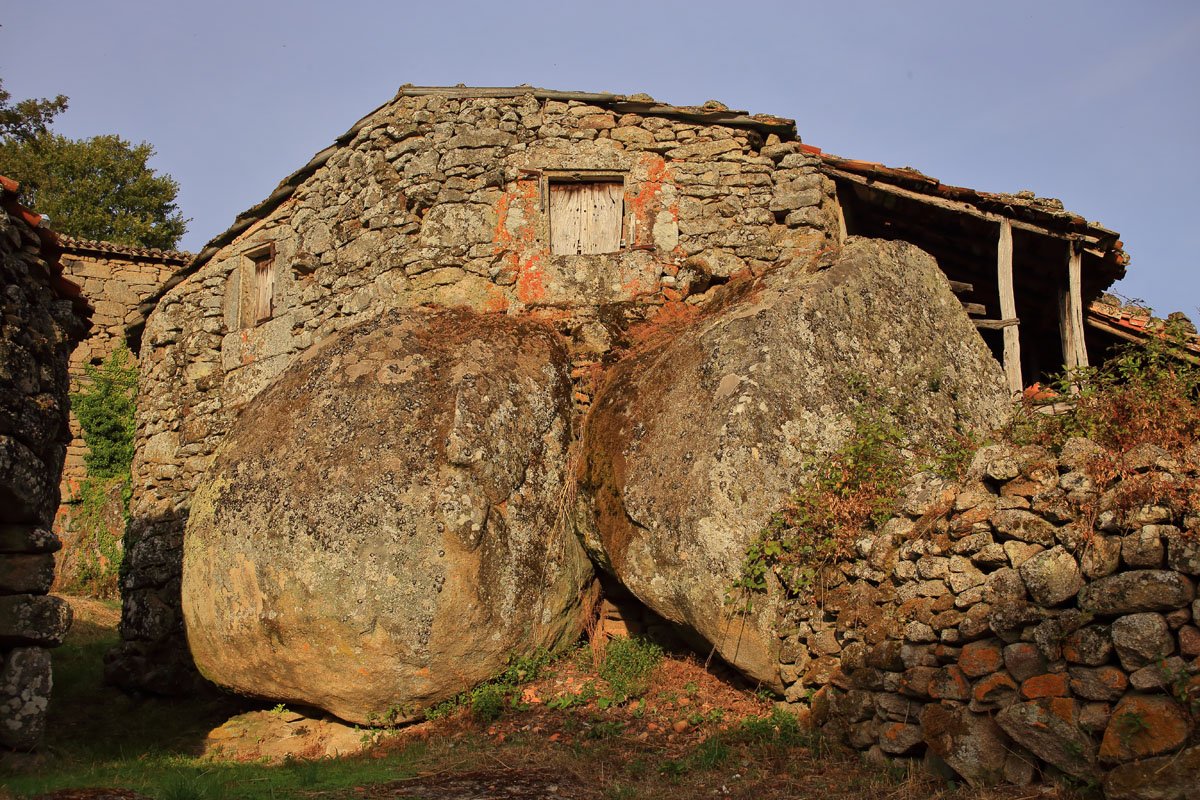La APP: Ofrecemos una herramienta turística más
Location. Almoite. Parish of Santa María de Almoite. Monument type. Religious. Interest: architectural and artistic; ethnographical and historical Dated. Unknow. Late Middle Age elements and Baroque style. Description. The “Igrexa de Almoite” (Almoite Church) is composed of a religious temple, Stations of the Cross in the surrounding wall, a wayside shrine, and a cross at the main entrance. Its style is Baroque. It represents a set of elements typical of religious architecture in Galicia that allows us to visualise an era. The “Cruceiro de pedra” (Stone Cross) rises at the foot of the stairs leading to the main entrance. The fluted column displays the images of Adam and Eve and the Serpent in the allegorical scene of the expulsion from Paradise. Finished in a capital with an abacus topped by a two-sided cross with the figures of Christ and the Virgin. In regards to the workmanship and carvings it has great similarities with what are considered the best crosses in Galicia, such as the “Cruceiro de Hio” (in Cangas do Morrazo). The Stations of the Cross is made up of several crosses along the wall of the churchyard. The Wayside Shrine is located on the wall of the churchyard of […]
Almoite na parroquia de Santa María de Almoite.
Location. Betán. Parish of San Martiño de Betán. Type of monument. Church of Romanesque origins. Interest: architectural and artistic, ethnographical and historical. Dated. High Middle Ages. Beginning of the 13th century. Description. Romanesque church from the beginning of the 13th century, reformed in the 18th century in the Baroque style. Rectangular ground plan with well crafted walls of granite and buttresses on the sides. Outside we find corbels in the lateral cornices. The main façade features arched cornice and is finished with pinnacles in the corners, on top of which is a steeple with a body finishing in a pyramid crowned by a stone cross. There is an access door with an arch and front with a Romanesque lintel, stone carved with a cross. The Romanesque elements we can observe are: the lintel in the entrance, the fifteen corbels of the eaves and also what you see in the window at the end of the belfry. Inside the lintel we see a cross pattée that divides the space into four parts, each dedicated to an animal. Cataloging. Inventory of Heritage Assets of the Government of Galicia.
Betán na Parroquia de San Martiño de Betán.
Location. Santa Eufemia de Ambía. Parish of Santo Estevo de Ambía. Type of monument. High middle Ages Chapel. Interest: Architectural, artistic, historical and ethnographical. Dated. 9th century. Beginning of the High Medieval Period. Description. Pre-Romanesque style chapel from the 9th century with Mozarabic influences. Chronologically linked to two other chapels of the same style in the Province of Ourense: Santa Comba (village of Bande) and San Miguel (in the grounds of the current Monastery of San Rosendo in Celanova). Such a concentration of architectural heritage can be found in few places in the Iberian Peninsula. The chapel dates back to the beginning of the European Middle Ages, with peninsular peculiarities of style and influences of the Mozarabic culture. The floor plan is of a single nave with a rectangular apse. Three windows with two horseshoe arches are preserved, corresponding with the three inner chapels that were divided in the original nave, preserved at the base of the arches they formed. Inside are one altar stone with Roman origins (Roman Empire) and a crucified Christ wood-engraving of Medieval-Romanesque origins. Next to Santa Eufemia, from the time of Romanisation, is located a fountain called the “Fonte das Ninfas” (The Nymph Fountain) from […]
Parroquia de Santo Estevo de Ambía.
Data de mediados do século XVIII. É sinalada pola súa impresionante fachada, tanto pola altura como pola variada decoración. No interior agocha varias sorpresas, coma o artesonado do teito, o retablo do altar, un tríptico de estilo “rococó” e o resto dunha pintura renacentista, que representa a Santa Lucía.
Vilariño de Lama Má. Baños de Molgas
Renaissance origin: 1565. The wealth and importance of this church can be seen in the set of works of art that we find inside. Altar altarpiece dated in the same chronology as the church, the wooden coffered ceiling. Ambía, as a parish territory, has been one of the most important places in the lands of Ourense throughout the Middle Ages; we find monumemtos and places of great historical and monumental interest: Suatorre, Santa Eufemia de Ambía, O Pazo, Vilameá, etc. Renaissance origin: 1565. The wealth and importance of this church can be seen in the set of works of art that we find inside. Altar altarpiece dated in the same chronology as the church, the wooden coffered ceiling. Ambía, as a parish territory, has been one of the most important places in the lands of Ourense throughout the Middle Ages; we find monumemtos and places of great historical and monumental interest: Suatorre, Santa Eufemia de Ambía, O Pazo, Vilameá, etc.
Santo Estevo de Ambía. Baños de Molgas







